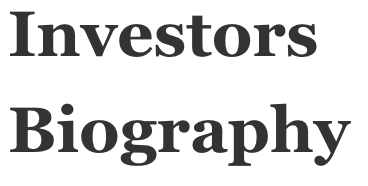Bill Gates is the cofounder of Microsoft and one of the leading technology entrepreneurs of his time. Under his leadership, Microsoft helped to define the early personal computing era through the release of such products as MS-DOS, Windows, and Office. The success made Microsoft into one of the world’s most profitable companies—and Gates one of the planet’s richest people. He has facilitated the donation of more than $65 billion to charitable causes around the world through the Bill and Melinda Gates Foundation, the largest private charity on Earth. Here’s what you need to know about this innovative programmer, entrepreneur, and philanthropist.
Early Life
William Henry Gates II was born on October 28, 1955, in Seattle, Washington. The second of three children, he excelled academically as a child but became moody and socially withdrawn as he approached his teenage years. His mother, a former teacher, and his father decided their son needed a change and enrolled him in the prestigious Seattle preparatory school Lakeside.
The decision was the right one. Gates flourished during his high-school years. It was at the preparatory school where Gates met Paul Allen. The pair were fortunate in that, during their time at Lakeside, the school acquired a teletype terminal for use by students. Gates spent a substantial amount of time on the machine, using it at the age of 13 to write his first software program.
Allen, who was two years Gates’ senior, eventually graduated from Lakeside and went on to enroll at Washington State University. Before he did, he and Gates commenced their first business partnership when they created and programmed Traf-O-Data, a traffic-counting system that earned the pair $20,000.
The Advent of Microsoft
Despite wanting to start a business with Allen, Gates acceded to his parents’ wishes by finishing high school and subsequently enrolling at Harvard University. Two years later, Allen, who had moved to Boston after dropping out of Washington State, read an article in Popular Mechanics about the development of a new micro-computer. Sensing an opportunity, the pair wrote a BASIC software program for the new product and, on the strength of their work, were eventually hired by the machine’s manufacturer.
Gates took a leave of absence from Harvard and, along with Allen, established Micro-Soft (a portmanteau of “micro-computer” and “software”) in 1975. The company changed its name to Microsoft the following year. After some early struggles, the business was grossing approximately $2.5 million by 1979. While he later spoke glowingly of his time at Harvard, Gates never returned to school.
Although already a profitable company, Microsoft saw its growth explode after Gates secured a meeting with International Business Machines (better known as IBM). Gates’ mother was a board member of the company, and through her he met IBM’s CEO. IBM had plans to release a personal computer (PC), and in 1980 it asked Microsoft to develop its operating system. After some business maneuvering, Gates licensed MS-DOS to IBM while deftly refusing to sell it outright, thus enabling Microsoft to profit from licensing it to other PC manufacturers.
The Success of MS-DOS
MS-DOS propelled Microsoft to new heights, with revenue at the company soaring to $16 million by mid-1981. Under Gates’ direction as president and chairman of the board, Microsoft opened offices overseas and, in 1985, released the Windows operating system. Gates himself became a millionaire when he took the company public in 1986. When the share price of the company exceeded $90 in 1987, he entered the ranks of the world’s billionaires.
On the personal front, 1987 also proved to be eventful, as it was in that year that Gates met Melinda French, who at the time was a Microsoft product manager. The couple married in 1994, the same year they founded the charity that would later come to be known as the Bill and Melinda Gates Foundation. The pair would remain together until 2021, when they would divorce.
Following the runaway success of MS-DOS, Gates and Microsoft continued to innovate. The company released the Microsoft Office software suite in 1989. Throughout the next decade, Gates continued to look for ways to keep Microsoft on the forefront of the technology industry.
A Ruthless Leader
At times, these innovations stifled competitors like Apple and IBM. In so doing, Gates built a reputation for his shrewd—some would say ruthless—business leadership. So effective was his blunting of the competition, in fact, that Microsoft was subject to several investigations by the Federal Trade Commission (FTC) into whether the company was a monopoly. For a time, it appeared as if it would need to be split up. However, it eventually weathered the storm, remaining as one entity after settling with the FTC.
Gates resigned as Microsoft’s CEO in 2000 and spent the next six years as the company’s chief software architect, though he retained his position as chairman during this time. With his charitable foundation now his focus, he began ramping down his duties at the company, first moving into a part-time role in 2008, then stepping down as chairman in 2014, and finally resigning from the board in 2020. Today, he continues to serve as a technology advisor to Microsoft’s current CEO.
A Generous Philanthropist
Through his charity, initially founded as the William H. Gates Foundation before being reestablished as the Bill and Melinda Gates Foundation in 2000, Gates has funded many causes. Among these are ones aimed at improving public health in vulnerable communities around the world. The foundation’s work on this front has included pledging $10 billion to spur vaccine development, initiating a $5.5 billion campaign to eradicate polio, and creating a health network designed to reduce childhood mortality.
Recent years have seen the Bill and Melinda Gates Foundation support efforts to curb climate change and fund the response to the COVID-19 pandemic. In recognition of his philanthropy, Gates was named one of the 20th century’s most influential people by Time magazine. In 2016, he received the United States’ highest civilian honor, the Presidential Medal of Freedom.

